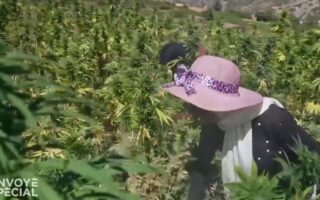Understanding Weeds: Nature’s Resilient Survivors
In gardens, fields, and backyards around the world, a seemingly innocuous green presence often sparks debate among enthusiasts and novices alike: the weed. These resilient plants, often dismissed as nuisances, possess a complex identity that transcends simple definitions. While many may envision a weed as any unwanted growth in a manicured lawn or cultivated plot, a deeper exploration reveals a rich tapestry of characteristics that challenge our perceptions. As we delve into the nuanced definition of weeds, we uncover their ecological roles, historical contexts, and the myriad ways they interact with humans and nature. Join us on this journey to redefine what it truly means to be a weed, and discover the unexpected significance of these oft-maligned botanical survivors.
Table of Contents
- Understanding the Botanical Definition of Weed
- The Cultural Perception of Weeds in Agriculture
- Identifying Common Weeds and Their Environmental Impact
- Strategies for Effective Weed Management and Control
- Q&A
- To Wrap It Up
Understanding the Botanical Definition of Weed
In botanical terms, a weed is defined as a plant that is considered undesirable, troublesome, or harmful in a particular context. This definition is inherently subjective, as what is deemed a weed in one setting may be valued in another. For instance, a plant labeled as a weed in a manicured garden might be a cherished wildflower in a natural landscape. The versatility of this term is underscored by its reliance on human perception, ecological impact, and land management practices. Factors that contribute to a plant being classified as a weed include:
- Invasiveness: Weeds often spread quickly and aggressively, outcompeting native species for resources.
- Habitat Disruption: They can alter local ecosystems, affecting flora and fauna.
- Human Utilization: Some weeds may be useful medicinally, yet still viewed as nuisances culturally.
The classification of a weed can be further illuminated by examining its characteristics such as growth patterns, reproductive strategies, and environmental adaptability. For example, many weeds exhibit rapid growth and abundant seed production, making them formidable challengers in agriculture and horticulture. Understanding these traits aids in developing effective management strategies. Below is a simple table highlighting common characteristics of various weeds:
| Weed Type | Growth Habit | Seed Production |
|---|---|---|
| Dandelion | Directly from taproot | Up to 15,000 per plant |
| Crabgrass | Prostrate in summer | Over 100,000 per plant |
| Thistle | Spreading rosettes | Approximately 200 seeds per flower |
The Cultural Perception of Weeds in Agriculture
The perception of weeds in agriculture is a fascinating reflection of cultural attitudes towards nature, labor, and productivity. In many societies, weeds are often seen as nuisances that disrupt the painstaking work of farmers. These plants, resilient and hardy, symbolize nature’s ability to reclaim land, challenging human efforts to control it. However, this view can be quite simplistic. In various cultures, certain weeds are respected for their medicinal properties and nutritional value, demonstrating a complex relationship between people and plants. Farmers often need to establish a balance between eradicating unwanted flora and acknowledging their role in biodiversity.
Interestingly, in some indigenous agricultural practices, the distinction between weeds and cultivated plants is blurred. These communities often utilize *pest species* that may be deemed weeds by conventional standards, leveraging their strengths for sustainable farming. The following points illustrate contrasting cultural outlooks on these plants:
- Symbol of Disruption: In modern agriculture, weeds are often viewed as detrimental to crop yield.
- Cultural Significance: Certain cultures revere “weeds” for their uses in traditional medicine or culinary dishes.
- Ecological Allies: Weeds can protect soil health and attract beneficial insects.
- Resilience: Many weeds thrive in harsh conditions, serving as a reminder of nature’s adaptability.
Identifying Common Weeds and Their Environmental Impact
Weeds are often characterized by their ability to grow quickly and thrive in a variety of environments, often disrupting the delicate balance of local ecosystems. Understanding the most common types can help in managing their impact effectively. Some prevalent weed species include:
- Dandelion (Taraxacum officinale): A resilient perennial that can spread rapidly, often competing with cultivated plants for resources.
- Crabgrass (Digitaria spp.): A summer annual that outcompetes many lawn grasses, leading to reduced biodiversity in grassy areas.
- Canada thistle (Cirsium arvense): Known for its invasive nature, it can dominate fields and pastures, making it challenging for native flora to establish.
These species not only compete with native plants but can also alter soil characteristics and affect pollinator habitats. By displacing native flora, weeds can disrupt food webs and reduce habitat availability for local wildlife. The environmental impacts of weeds can be summarized in the following table:
| Weed | Impact |
|---|---|
| Dandelion | Attracts pollinators, but overshadows other native herbs. |
| Crabgrass | Reduces grass diversity and promotes soil erosion. |
| Canada thistle | Invades farmland, harming native ecosystems. |
Strategies for Effective Weed Management and Control
Effective weed management requires a multifaceted approach that combines various strategies tailored to the specific environment and types of weeds present. Cultural practices play a vital role; by promoting healthy growth of desired plants, you can create conditions less favorable for weeds. Techniques such as crop rotation, planting cover crops, and using mulch can suppress weed germination and reduce competition for nutrients and water. Additionally, maintaining soil health through practices like composting and minimizing soil disturbance can lead to a robust ecosystem where desirable plants thrive, making it difficult for weeds to establish themselves.
Implementing integrated weed management (IWM) strategies enhances the effectiveness of control measures and minimizes reliance on chemical herbicides. A well-rounded IWM plan can include methods such as manual removal, targeted herbicide application, and biological control using natural predators or competitors. Create a monitoring schedule to assess weed populations and adapt strategies accordingly. The table below outlines some common weed control methods and their effectiveness:
| Control Method | Effectiveness | Best Use Case |
|---|---|---|
| Manual Removal | Moderate | Small-scale gardens |
| Herbicide Application | High | Larger fields |
| Mulching | Moderate | Flower beds and shrubs |
| Cover Cropping | High | Crop rotation systems |
Q&A
Q&A: Exploring the Definition of “Weed”
Q1: What is the basic definition of “weed”?
A1: At its core, “weed” refers to any plant that is considered undesirable or out of place in a particular environment. These plants often grow aggressively and can disrupt the growth of cultivated plants, leading many to label them as nuisances.
Q2: Are all weeds the same?
A2: Not at all! Weeds can vary significantly based on the region, climate, and specific ecosystem. While some may be universally recognized as problematic—like dandelions or crabgrass—others may only be considered weeds in certain agricultural settings or landscapes.
Q3: How do researchers differentiate between a weed and a beneficial plant?
A3: The distinction often hinges on context. A plant that thrives in wilderness may become a weed in a garden. Researchers look at factors like growth patterns, reproductive habits, and ecological impact to determine if a plant is indeed a weed.
Q4: What’s the role of weeds in the ecosystem?
A4: Weeds can play several important roles in the ecosystem, including soil stabilization, provision of habitat for wildlife, and supporting pollinators. Some even contribute to soil health by adding nutrients or preventing erosion, despite their reputation as undesirable plants.
Q5: How do people manage weeds in gardening and agriculture?
A5: Weed management strategies range from manual removal to chemical herbicides. Techniques can include mulching, crop rotation, and employing companion planting—where certain plants are grown together to deter weeds naturally.
Q6: Have definitions of “weed” evolved over time?
A6: Yes, indeed! The concept of a weed has evolved alongside agricultural practices and societal perceptions of certain plants. Over time, some plants that were once considered weeds have gained recognition as valuable herbs or food sources, like purslane or lamb’s quarters.
Q7: What can people do to better understand the weeds in their area?
A7: I recommend starting with local gardening clubs or extension services that provide resources on regional flora. Field guides or smartphone apps can also help identify specific plants and offer insights into their ecological roles and management tactics.
Q8: Is there a humorous side to the concept of weeds?
A8: Absolutely! The saying ”one person’s weed is another person’s wildflower” captures the quirky nature of plants. Weeds often inspire creativity in gardeners, leading to playful plant wars or competitions to see who can cultivate the “most invasive” species!
Conclusion:
Understanding the definition of “weed” goes beyond a simple label; it opens up a dialogue about our relationship with the plant kingdom. By appreciating the multifaceted roles that weeds play, we can foster a more harmonious existence with the natural world.
To Wrap It Up
As we draw the curtain on our exploration of the multifaceted term “weed,” it’s clear that this humble word carries a wealth of meanings and implications. From its botanical roots as a pesky intruder in gardens to its cultural significance as a symbol of relaxation, advocacy, and even controversy, the definition of weed transcends simple classification. Understanding the nuances of this term not only broadens our vocabulary but also invites us to engage with the ongoing dialogue surrounding its many dimensions. Whether you view it as a nuisance or a natural remedy, one thing remains certain: the conversation about weed is far from over. As society continues to evolve, so too will the meanings we ascribe to this enigmatic plant. Thank you for joining us on this enlightening journey—may our discussions continue to cultivate awareness and understanding in the ever-shifting landscape of language and culture.


